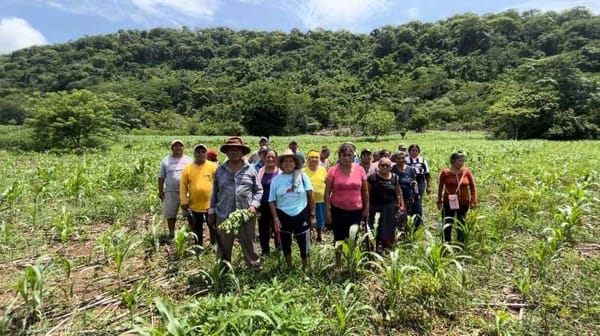A concise account of the Huave people's history
The Huaves are also known as Mareños or Huazantecos. The term huave was coined by the Zapotecs to refer to "people who rot in the humidity".

The word "huave" describes an interethnic relationship as well as a group of people who speak the same language. The Zapotecs made up the phrase "the people who rot in the humidity" to describe their neighbors who lived between the sea and the lagoons. This created a line between the two groups.
At the end of the pre-Columbian era, the Zapotecs of Zaachila moved down to the plains of the Isthmus. They did this to take advantage of the Mixes and Huaves' weakness after Moctezuma's armies went through their lands on their way to the Soconusco, forcing the Huaves to flee to the sea and the Mixes to hide in the mountains.
During this time, the Isthmus of Tehuantepec was a key part of the trade routes between the central Altiplano and the Soconusco region, which is now in the state of Chiapas. The Zoques were close neighbors of the Huaves in the Chimalapas nature reserve. At that time, the Huaves lived on an important part of the Chiapas coast, and their people helped Mexica traders who traveled the ancient salt route.
The Zapotecs moved into the Isthmus, in part because the Huaves let the Mexicas pass through freely on their way to the Soconusco. This caused the original settlements to be reduced to a group of coastal towns, whose people became known as "mareños" because they lived on the coast.
By the middle of the 16th century, Cortés, who was called Marquesado del Valle, was in charge of a large part of Oaxaca, from the central valleys to the Isthmus of Tehuantepec. Even though the Isthmus of Tehuantepec was within the boundaries of the commission, as a reward to Cortés for his work in the conquest, the Spanish Crown left out the port of Tehuantepec because no private person could own maritime ports under commission.
The Huaves and the Region of Tehuantepec
In 1529, Tehuantepec's mayor's office became the religious and political center of the province. From that point on, the Huave people were under its control and started paying tribute in kind, mostly by taking fish and shrimp from the lagoons. From the earliest records of the area, it is clear that the Huaves were a major source of goods from the sea that were sold in the colonial political capitals.
The lists of goods that towns used to pay their taxes to the Crown, especially in the Books of Appraisals and the Geographical Relations, show that shrimp and fish were the main products of the people who lived near the sea. The Huave people were mostly known as fishermen and people who traded marine products, which was easy for them to do because the rivers and lagoons were so rich.
As a result of the epidemics that happened in the 16th century, the villages in the province of Tehuantepec shrank to small towns with just a few hundred people. Because of this process, the number of people in the area dropped from 20,000 to 3,200 in less than 50 years. As a result, many stretches of land were cleared of people and turned into cattle ranches.
So, the province of Tehuantepec became the site of a cattle ranching business that led to a geometric increase in the number of ranches. At that time, there were five times as many cattle and sheep as people living in the province.
Coastal Plains and the Isthmus of the Oaxaca, Mexico
Since the beginning of colonial times, people knew that the coastal plains and the Oaxacan Isthmus were good places for grazing because they were less populated than the central valleys. The area was surrounded by two rivers, which we now call Tehuantepec and Los Perros. Even during the annual dry seasons, there was enough water for irrigation and raising livestock.
There were a lot of salt flats along the coast, which was a good thing because each steer needed at least a fifth of salt to gain weight. Since salt mining and raising cattle went hand in hand, the haciendas were placed near the salt pans, which were mostly along the Huave coast.
The Marquesado del Valle built the haciendas of Guazantlán and Las Salinas. They were between the mouth of the Tehuantepec River and the salt flats that went west of the coast. By the end of the 16th century, the first, which was bigger, had become one of the most productive estancias in the area. Its cattle, mules, and horses were shipped to the cities of Mexico and Cuernavaca.
Source: Huaves, by Saúl Millán, pages 6-9. Saúl Millán is Dr. in Anthropological Sciences. He is a professor-researcher at the National School of Anthropology and History of the National Institute of Anthropology and History. National Commission for the Development of Indigenous Peoples (Comisión Nacional para el Desarrollo de los Pueblos Indígenas). INPI




